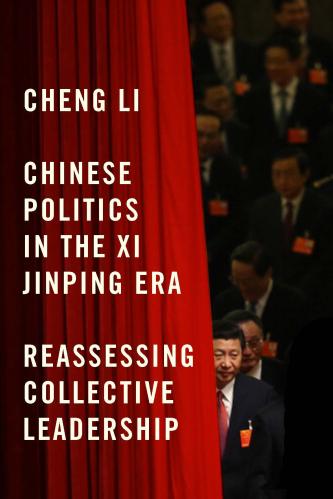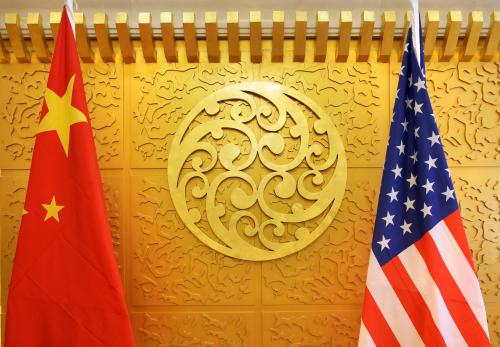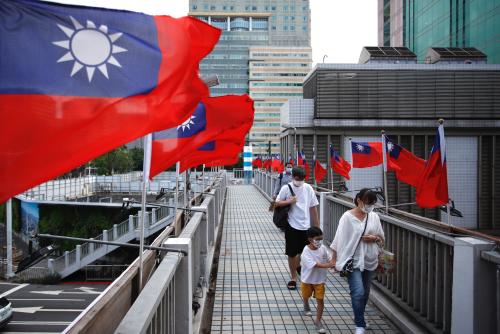For now, while there are many things to be worried about in China, a single and all-pervasive ranking system isn’t one of them—yet, writes Jamie Horsley. This piece originally appeared on ForeignPolicy.com.
China’s sweeping, data-driven “social credit” initiative is sounding alarms. In a speech on Oct. 4, U.S. Vice President Mike Pence described it as “an Orwellian system premised on controlling virtually every facet of human life.” But there’s a small problem. The system doesn’t actually exist—at least as it’s generally portrayed.
It’s not surprising that myths about the system are spreading, given the shrinking space in China for civil society, rights lawyering, speech, investigative journalism, and religious belief; its increasingly ubiquitous, invasive surveillance capability; and the Chinese Communist Party’s push to apply big data and artificial intelligence in governance. China’s party-state is collecting a vast amount of information on its citizens, and its social credit system and other developments internally and overseas raise many serious concerns. But contrary to the mainstream media narrative on this, Chinese authorities are not assigning a single score that will determine every aspect of every citizen’s life—at least not yet.
Chinese authorities are not assigning a single score that will determine every aspect of every citizen’s life—at least not yet.
It’s true that, building on earlier initiatives, China’s State Council published a road map in 2014 to establish a far-reaching “social credit” system by 2020. The concept of social credit (shehui xinyong) is not defined in the increasing array of national documents governing the system, but its essence is compliance with legally prescribed social and economic obligations and performing contractual commitments. Composed of a patchwork of diverse information collection and publicity systems established by various state authorities at different levels of government, the system’s main goal is to improve governance and market order in a country still beset by rampant fraud and counterfeiting.
Under the system, government agencies compile and share across departments, regions, and sectors, and with the public, data on compliance with specified industry or sectoral laws, regulations, and agreements by individuals, companies, social organizations, government departments, and the judiciary. Serious offenders may be placed on blacklists published on an integrated national platform called Credit China and subjected to a range of government-imposed inconveniences and exclusions. These are often enforced by multiple agencies pursuant to joint punishment agreements covering such sectors as taxation, the environment, transportation, e-commerce, food safety, and foreign economic cooperation, as well as failing to carry out court judgments.
These punishments are intended to incentivize legal and regulatory compliance under the often-repeated slogan of “whoever violates the rules somewhere shall be restricted everywhere.” Conversely, “red lists” of the trustworthy are also published and accessed nationally through Credit China.
The scope, scale, diversity, and language of the evolving system have caused a lot of confusion, particularly with respect to the existence of a single social credit score. There is no such thing as a national “social credit score.”
A few dozen towns and citiesin China, as well as private companies running loyalty-type programs for their customers, do currently compute scores, primarily to determine rewards or access to various programs. That was the source of at least some of the confusion. Ant Financial’s Sesame Credit program, for instance, which gives rewards on various platforms and easier access to credit, was often cited as a precursor of a planned government program, despite being a private enterprise.
The government does assign universal social credit codes to companies and organizations, which they use as an ID number for registration, tax payments, and other activities, while all individuals have a national ID number. The existing social credit blacklists use these numbers, as do almost all activities in China. But these codes are not scores or rankings. Enterprises and professionals in various sectors may be graded or ranked, sometimes by industry associations, for specific regulatory purposes like restaurant sanitation. However, the social credit system does not itself produce scores, grades, or assessments of “good” or “bad” social credit. Instead, individuals or companies are blacklisted for specific, relatively serious offenses like fraud and excessive pollution that would generally be offenses anywhere. To be sure, China does regulate speech, association, and other civil rights in ways that many disagree with, and the use of the social credit system to further curtail such rights deserves monitoring.
China’s credit reporting system, whose financial reports comprise a core component of what is considered “social credit,” may also have contributed to the myth. The Chinese term for credit reporting (xinyong zhengxin) is often translated as “credit scoring.” However, the primary financial credit reporting system for companies and individuals overseen by the People’s Bank of China (PBOC), China’s central bank, does not provide credit scores or assessments with its standard reportsand does not mention “scoring” in its definition of credit reporting. The PBOC’s Credit Reference Center, like licensed private credit reporting agencies, does offer financial credit scores (xinyong pingfen).
Widely reported private credit scoring programs launched not by credit reporting agencies but by some payment platforms such as Ant Financial’s, which consider e-commerce interactions as well as financial histories to determine customer scores, likely also contributed to the misconception of a social credit score. The PBOC, looking to expand its consumer credit coverage by sourcing data from online lenders and other nontraditional sources, in 2015 authorized eight companies—some of which, including Sesame Credit, ran customer scoring programs—to seek credit reporting agency licenses. None of those companies qualified.
However, this year the PBOC did license a national agency called Baihang Credit (Baihang Zhengxin), with those eight companies as shareholders, to provide credit reporting services to clients and contribute data from online microlenders and peer-to-peer lending platforms to the PBOC for compiling more accurate consumer credit histories. Baihang may offer credit scoring products, but those scores, as opposed to the data on which they are based, are not part of the official social credit system yet.
A second misapprehension is that the social credit system collects data on every citizen. The government does collect regulatory information on all companies and social organizations, and different departments maintain their own dossiers on individuals. Some of this information is made public, and the social credit system is intended to create a culture of greater trust and creditworthiness in society as a whole. However, at present the system prioritizes compiling and sharing public record-type data such as licensing, other regulatory information, and adverse court decisions on adults in key areas. Unless people are sole proprietors or company representatives, have taken a loan or credit card, violated the law, or defaulted on a court judgment, they’re unlikely to be in the social credit database.
A third common error is the belief that social behavior, consumption habits, and political loyalty impact one’s social credit and constitute a basis for imposing punishments. Again, that misconception typically arises from conflating private commercial rewards programs, which do consider shopping and social behaviors in assigning their own credit scores to customers who opt in to the program, with the government-sponsored social credit system. The core government documents, sectoral and local government regulations, and numerous multiagency joint punishment systems thus far rely on published standards of compliance with laws, regulations, and contractual obligations, rather than on loose concepts of appropriate behavior or one’s random digital activity, to enforce the social credit system.
There are plenty of legitimate concerns. The massive amounts of data being compiled and shared heighten the dangers of hacking and leaking personal and other confidential information. Information security is a huge problem in China. In a recent survey, 85 percent of respondents reported they had suffered data leaks ranging from phone numbers to bank account details. National and local social credit and other documents do call for enhanced information security and privacy protections. However, China does not yet have an overarching privacy law or the ability to enforce these protections.
The social credit system’s use of public blacklists and shaming—what one scholar calls “reputation mechanisms”—as well as the joint punishment mechanism that essentially imposes yet another layer of penalty enforcement for legal offenses are controversial and problematic. The standards for getting put on blacklists, managed by different departments at multiple levels to enforce rules within their jurisdiction, are not always clear. The targets are not always notified and given a chance to contest the listing
Some blacklisted individuals have continued to face restrictions after their debt was repaid or the time period for the penalty expired, creating situations such as the man who discovered through denial of his credit card application that his bank was not informed of his removal from the blacklist, and the admitted student who was erroneously denied his place at a university due to his father’s failure to pay back a bank loan. The technical challenges of running such a sprawling, complex system efficiently and minimizing mistakes are mind-boggling.
The danger that the Chinese party-state may attempt to develop a global citizen score and start using opaque algorithms to determine one’s creditability for a variety of political as well as financial and regulatory purposes cannot be ruled out. China outlaws conduct such as reporting on protests, spreading online rumors, and growing “abnormal beards” in Xinjiang, and such offenses could certainly be used as a basis for imposing punishments under the social credit system. However, the Chinese party-state has many other tools to address public and political security issues. Moreover, given the diverse standards for assessing legal noncompliance and landing on any particular social credit blacklist, it would be challenging to devise a global score that would have a meaningfulregulatory impact.
For now, while there are many things to be worried about in China, a single and all-pervasive ranking system isn’t one of them—yet.







Commentary
China’s Orwellian social credit score isn’t real
November 19, 2018